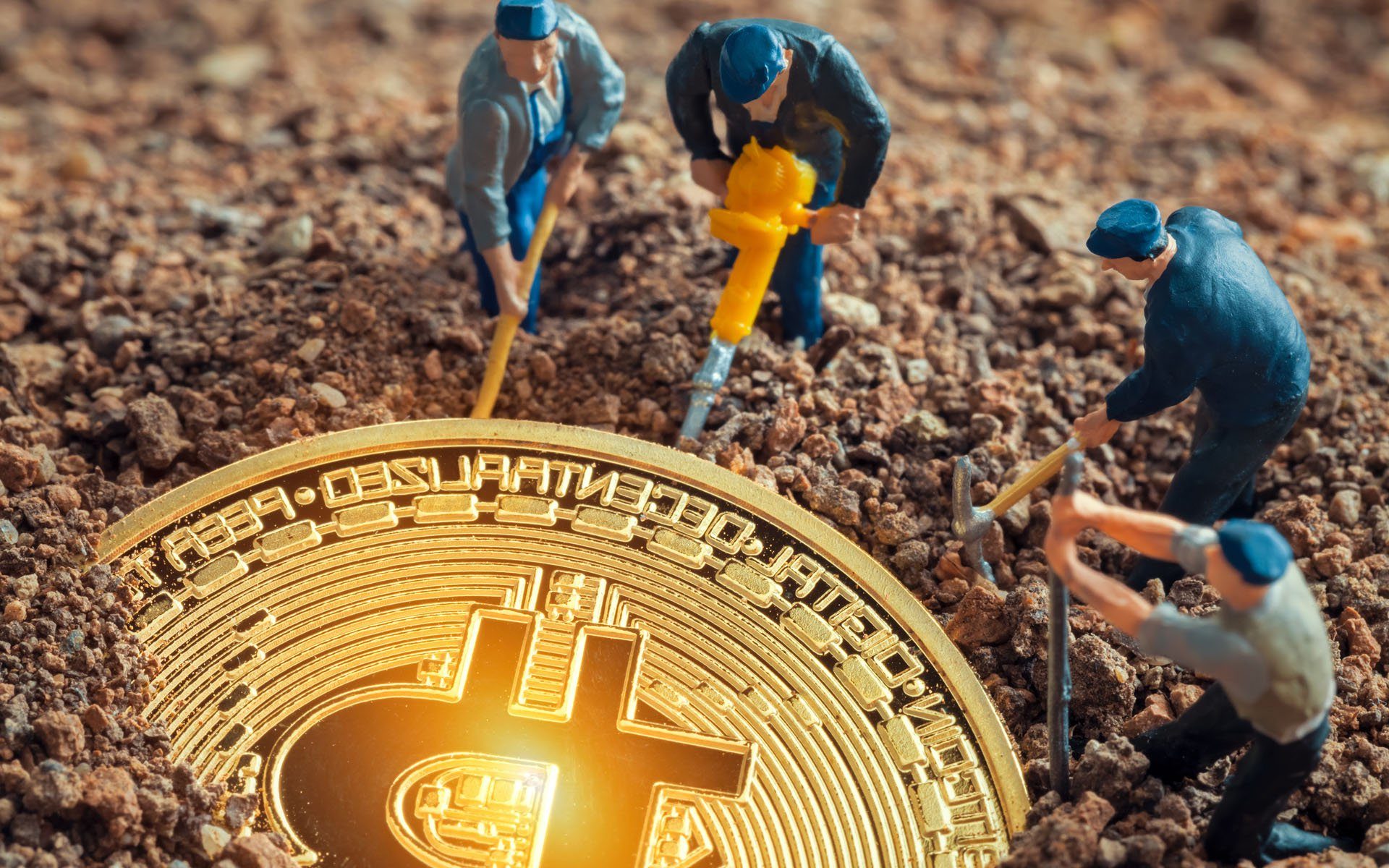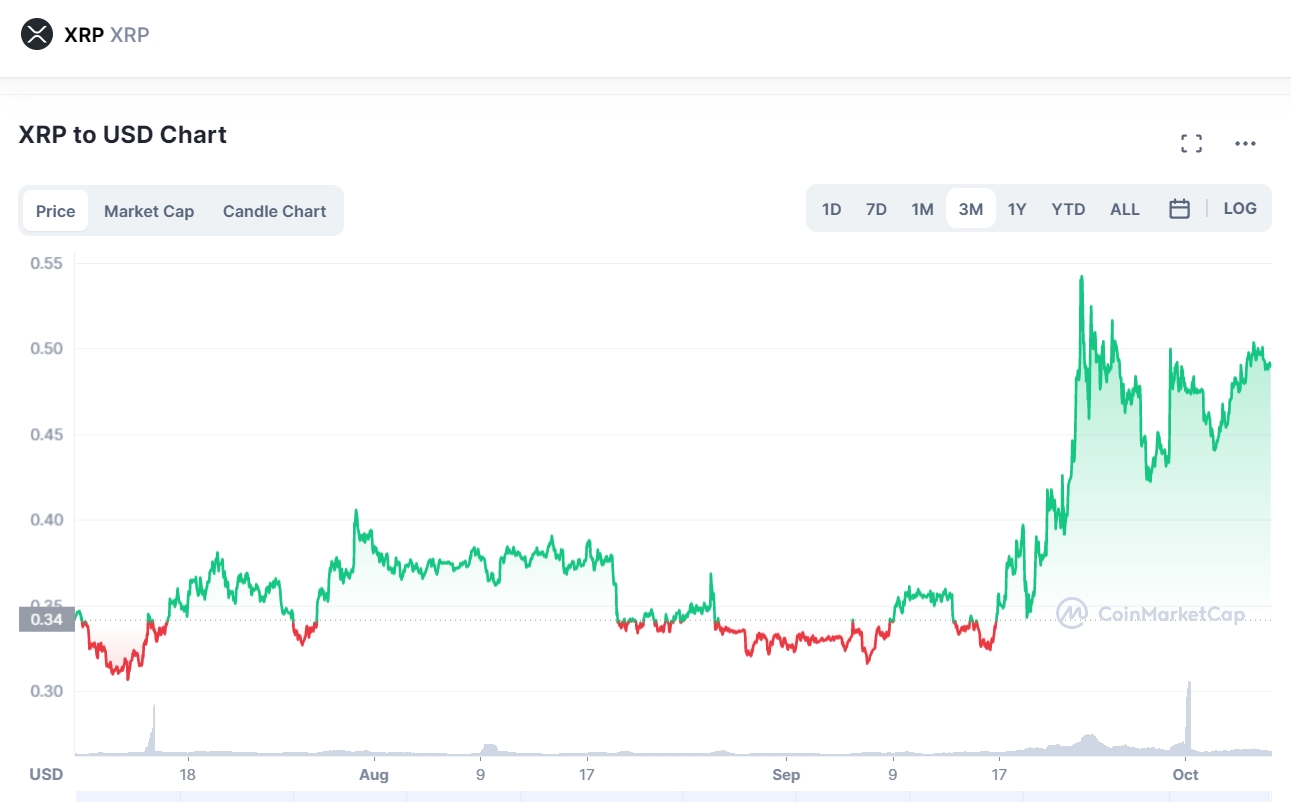Increased Bitcoin Mining Difficulty: Examining The Recent Surge

Table of Contents
What is Bitcoin Mining Difficulty and Why Does it Increase?
Bitcoin mining difficulty refers to a measure of how hard it is to solve the complex cryptographic puzzles required to mine a new block of Bitcoin transactions and add it to the blockchain. This difficulty dynamically adjusts to maintain a consistent block time of approximately 10 minutes. This is vital for the security and stability of the Bitcoin network. The higher the difficulty, the more computational power is needed to successfully mine a block.
- Definition of Bitcoin mining difficulty: A numerical value representing the computational effort required to mine a block.
- Explanation of how difficulty adjusts: The Bitcoin protocol automatically adjusts the mining difficulty every 2016 blocks (approximately every two weeks) based on the time it took to mine the previous 2016 blocks. If blocks are mined faster than 10 minutes on average, the difficulty increases; if slower, it decreases.
- Relationship between hash rate and mining difficulty: The hash rate represents the total computational power of the Bitcoin network. A higher hash rate generally leads to a higher mining difficulty, as more miners are competing to solve the cryptographic puzzles.
- The role of miners in maintaining network security: Miners secure the Bitcoin network by verifying and adding transactions to the blockchain. The difficulty adjustment ensures that this process remains consistently challenging, deterring malicious actors and maintaining the integrity of the system.
Factors Contributing to the Recent Surge in Bitcoin Mining Difficulty
The recent increase in Bitcoin mining difficulty is a result of several interconnected factors:
- Increased adoption of Bitcoin: Growing global adoption of Bitcoin translates to higher transaction volumes on the network, demanding more computational power to process them. This increased demand pushes up the mining difficulty.
- Growth in the number of active miners: More miners joining the network contribute to a higher overall hash rate, directly increasing the difficulty of mining. This is a natural consequence of Bitcoin's growing popularity and profitability (at certain price points).
- Technological advancements in mining hardware (ASICs): The development of more powerful Application-Specific Integrated Circuits (ASICs) allows miners to achieve higher hash rates, leading to increased competition and a subsequent rise in difficulty. The constant race for more efficient hardware directly impacts the overall network hash rate.
- Market price fluctuations and their impact on miner profitability: While not a direct causal factor, Bitcoin's price significantly influences miner profitability. Higher prices incentivize more miners to join the network, contributing to the rise in difficulty. It's crucial to note the correlation, not causation, between price and difficulty.
Implications of Increased Bitcoin Mining Difficulty for Miners and the Network
The surge in Bitcoin mining difficulty carries significant implications for both individual miners and the broader Bitcoin network:
- Higher energy consumption and operational costs for miners: Increased difficulty necessitates greater computational power, leading to higher electricity consumption and operational costs. This impacts the profitability of mining operations, particularly for those with less efficient equipment.
- Increased competition among miners and reduced profitability for some: The heightened difficulty intensifies competition among miners. Less efficient operations might struggle to remain profitable, potentially leading to some miners exiting the market.
- Enhanced security and resilience of the Bitcoin network: Paradoxically, increased difficulty strengthens the security of the Bitcoin network. A higher difficulty makes it exponentially more difficult for malicious actors to conduct 51% attacks or manipulate the blockchain.
- Potential impact on decentralization: Increased difficulty could potentially lead to a more centralized network if only large, well-funded mining operations can afford to operate profitably. Conversely, technological advancements making mining more accessible could counteract this trend.
The Future of Bitcoin Mining Difficulty
Predicting the future of Bitcoin mining difficulty is challenging but based on current trends:
- Predictions about future difficulty adjustments: Given the current trajectory of Bitcoin adoption and technological advancements, we can expect further increases in mining difficulty in the foreseeable future. The rate of increase will depend on the interplay of various factors.
- Potential impact of technological advancements in mining hardware: Further innovations in ASIC technology will likely continue to drive increases in hash rate, leading to subsequent difficulty adjustments. However, the pace of innovation is uncertain.
- Discussion on the sustainability of Bitcoin mining in the long term: The environmental impact of Bitcoin mining is a major concern. The long-term sustainability of the network will likely depend on the adoption of more energy-efficient mining technologies and renewable energy sources.
- The role of regulatory changes and their influence on mining operations: Government regulations concerning energy consumption and cryptocurrency mining could significantly impact the future of Bitcoin mining difficulty and the overall network.
Conclusion
The recent surge in Bitcoin mining difficulty is a multifaceted phenomenon driven by increased adoption, technological advancements, and market dynamics. This increase has significant implications for miners, impacting profitability and operational costs, while simultaneously enhancing the security and resilience of the Bitcoin network. Understanding these dynamics is crucial for anyone involved in the Bitcoin ecosystem. Stay informed about changes in Bitcoin mining difficulty and its impact on the cryptocurrency market. Follow our blog for the latest updates on Bitcoin mining difficulty and other critical developments in the world of Bitcoin.

Featured Posts
-
 Liga De Quito Y Flamengo Igualan En Emocionante Encuentro De Libertadores
May 08, 2025
Liga De Quito Y Flamengo Igualan En Emocionante Encuentro De Libertadores
May 08, 2025 -
 Xrp Price On The Rise Grayscales Sec Filing And Potential Record High
May 08, 2025
Xrp Price On The Rise Grayscales Sec Filing And Potential Record High
May 08, 2025 -
 Py Ays Ayl 2024 Lahwr Ke Askwlwn Ke Awqat Kar Myn Tbdyly
May 08, 2025
Py Ays Ayl 2024 Lahwr Ke Askwlwn Ke Awqat Kar Myn Tbdyly
May 08, 2025 -
 Cowherd On Tatums Performance Celtics Game 1 Post Game Analysis
May 08, 2025
Cowherd On Tatums Performance Celtics Game 1 Post Game Analysis
May 08, 2025 -
 Xrp Price Prediction Deciphering The 2 Support Level Reversal Or Breakdown
May 08, 2025
Xrp Price Prediction Deciphering The 2 Support Level Reversal Or Breakdown
May 08, 2025
